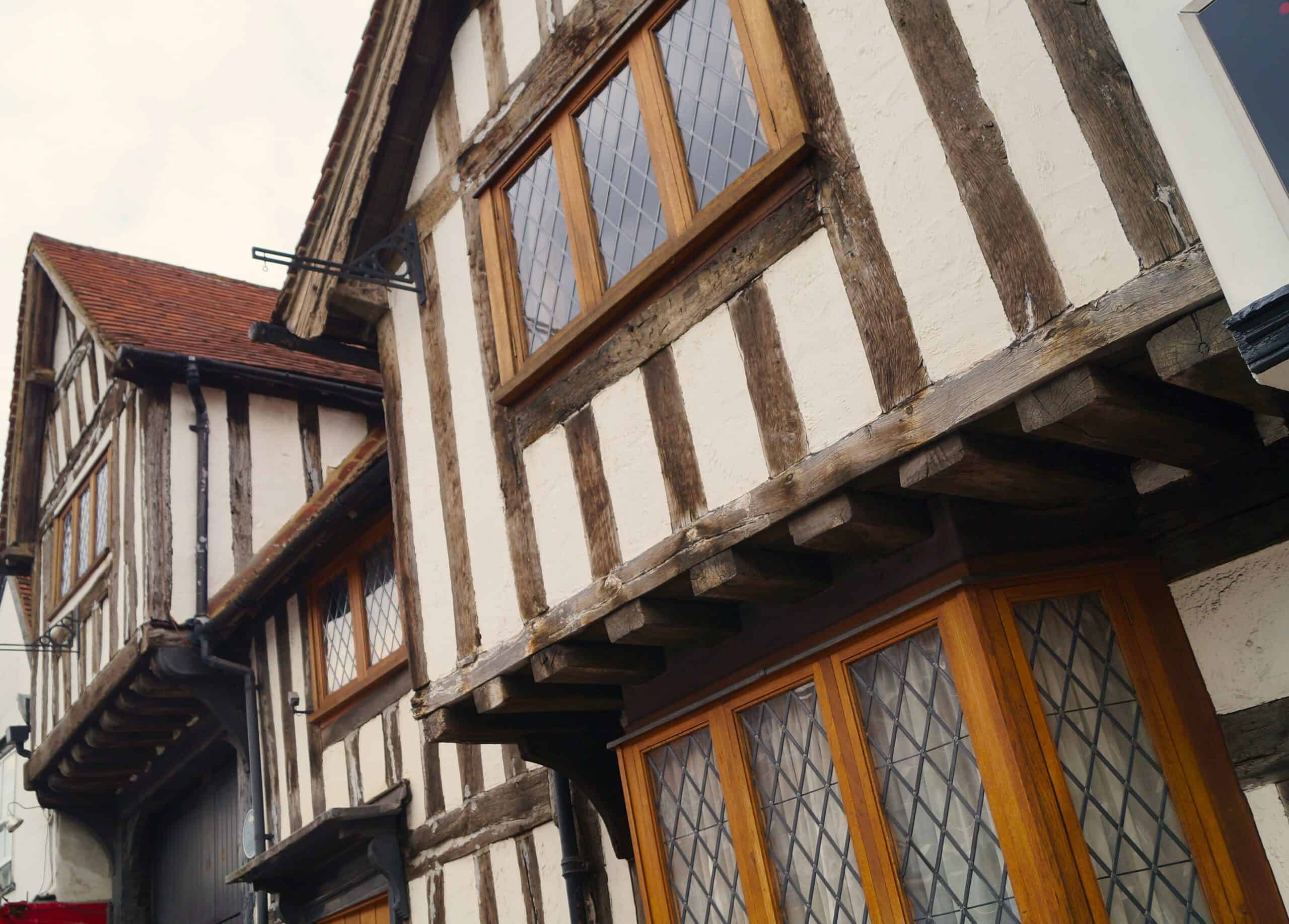Hitchin is fortunate in having retained a large number of fine buildings across a range of architectural styles and eras.
Its most iconic building is St. Mary’s Church, the largest parish church in Hertfordshire. A sacred site for many centuries, the majority of the current church is from the 14th and 15th centuries, although the tower, a traditional ‘Hertfordshire stump’, is much older.
There are still many medieval timber-framed buildings in the town including the Biggin (next to Hitchin Market), William Ransom’s House in Bancroft and several properties in the Churchyard area. Indeed, there are a very large number of medieval buildings remaining, but most are now concealed behind brick or rendered exteriors.
The old Market Square has a fine array of buildings, including the old Corn Exchange. Completed in 1854 this Italianate style building speaks of the prosperity and confidence of the Town, which had just been boosted by the arrival of the Great Northern Railway in 1850.
Other buildings of note include Hitchin Priory. Established as a monastic house in 1317, it was remodelled in the Adamite style in the 18th century.
Of course, not all of Hitchin’s buildings were high status. For 500 years the area around Queen Street was a warren of slums and alleyways called ‘Dead Street’. From the Black Death of 1349 to the Public Health reforms of the 1840s around a fifth of the Town’s population eked out an existence in these terrible conditions. All that remains today of their struggle is the inscription in the steps across the river from the Church recording the slum clearances of the late 1920s.
But for a more uplifting experience, take a stroll around the town centre streets, looking above the shop fronts to see architectural features and reminders of the past. If you work up a hunger or thirst, you’ll be delighted to see that some of the town’s finest looking buildings are pubs and eateries!

